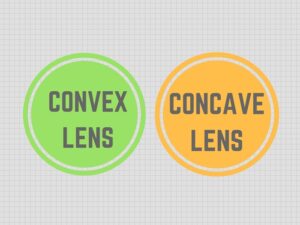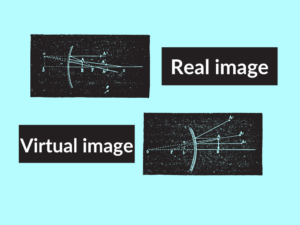What is a concave lens?
A concave lens is a lens that is thinner at the center and thicker at the edges. It is also known as a diverging lens because it diverges or spreads out the incident light rays. The surface of a concave lens is curved inwards, causing the light waves to refract away from the principal axis.
Examples of concave lens
Some common examples of concave lenses include eyeglasses for nearsightedness, camera viewfinders, and astronomical telescopes. These lenses are used to correct vision problems and allow distant objects to be seen more clearly.
Uses of concave lens
Concave lenses have various applications in different fields. They are extensively used in the medical and optical industries. Some common uses include the correction of nearsightedness, the production of laser beams, and the creation of image-forming devices such as microscopes and projectors.
What is a convex lens?
A convex lens is a lens that is thicker at the center and thinner at the edges. It is also known as a converging lens because it converges or focuses the incident light rays. The surface of a convex lens is curved outwards, causing the light waves to refract towards the principal axis.
Examples of convex lens
Convex lenses can be found in numerous everyday objects, including magnifying glasses, cameras, and eyeglasses for farsightedness. These lenses are used to magnify objects and bring distant objects into focus.
Uses of convex lens
Convex lenses have a wide range of applications across various fields. They are commonly used in photography, astronomy, and in the production of optical instruments. Some specific uses include the magnification of objects for better visibility, the correction of farsightedness, and the production of high-quality images in telescopes and microscopes.
Differences between concave and convex lens
| Difference Area | Concave Lens | Convex Lens |
|---|---|---|
| Their shape | The lens is thinner at the center and thicker at the edges with a curved inward surface. | The lens is thicker at the center and thinner at the edges with a curved outward surface. |
| Refraction direction | Concave lenses diverge or spread out the incident light rays. | Convex lenses converge or focus the incident light rays. |
| Image formation | Concave lenses always create virtual, upright, and diminished images. | Convex lenses can create real and virtual images, depending on the position of the object. |
| Primary use | Used to correct nearsightedness and in devices like projectors and telescopes. | Used for magnification, focusing, and in devices like cameras and magnifying glasses. |
| Focal point location | The focal point of a concave lens is on the same side as the object. | The focal point of a convex lens is on the opposite side from the object. |
| Thickness distribution | Concave lenses are thinnest at the center and thickest at the edges. | Convex lenses are thickest at the center and thinnest at the edges. |
| Optical power | Negative optical power for concave lenses. | Positive optical power for convex lenses. |
| Image size | Concave lenses always form smaller images compared to the object. | Convex lenses can form both smaller and larger images, depending on the object’s position. |
| Field of view | Concave lenses produce a wider field of view. | Convex lenses produce a narrower field of view. |
| Convergence/divergence | Concave lenses diverge parallel light rays. | Convex lenses converge parallel light rays. |
Conclusion:
In summary, concave and convex lenses differ in their shape, refraction direction, image formation, primary uses, focal point location, thickness distribution, optical power, image size, field of view, and convergence/divergence. Concave lenses are thinner at the center and spread out light, while convex lenses are thicker at the center and focus light. Their applications and optical properties make them suitable for various purposes in different fields.
People Also Ask:
1. What are the main characteristics of concave and convex lenses?
Concave lenses are thinner at the center, diverge light, create virtual and diminished images, and are used for correcting nearsightedness. Convex lenses are thicker at the center, converge light, can create real and virtual images, and are used for magnification and focusing.
2. How do concave and convex lenses affect vision?
Concave lenses correct nearsightedness by diverging the incoming light, allowing it to focus properly on the retina. Convex lenses, on the other hand, correct farsightedness by converging the light, compensating for the shape of the eye.
3. What are some common applications of concave and convex lenses?
Concave lenses are used in devices like telescopes, projectors, and camera viewfinders. Convex lenses are commonly found in magnifying glasses, cameras, and eyeglasses for farsightedness.
4. Can concave and convex lenses create both real and virtual images?
Yes, convex lenses can create both real and virtual images depending on the position of the object. Concave lenses, on the other hand, always produce virtual images, irrespective of the object’s position.
5. How can concave and convex lenses be used in photography?
Convex lenses are commonly used in photography for image magnification and focusing. They help capture sharp and clear images of distant objects. Concave lenses, although less frequently used, can be employed for special effects or to create specific distortions in images.



